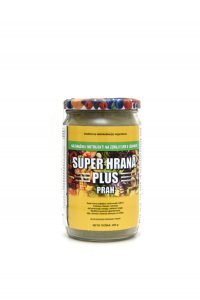What is athlete's foot?

pain is present in some cases. The condition usually worsens when the weather is warmer.
Why does it arise?
Athlete's foot is caused by one or more types of parasitic fungi. Fungal skin infections are more difficult to neutralize than bacterial ones. This kind of problem can arise whenever the feet are in a warm and humid environment. By scratching, the disease is transmitted to the hands, under the nails and other parts of the body. Fungi that cause athlete's foot
they spread quickly, while the beneficial bacteria are destroyed by antibiotics and medicines. These organisms are transmitted when you walk barefoot on an infected floor around swimming pools, showers and other public places.
Nutrition and hygiene

SHOES AND SOCKS - Keep your feet dry. After bathing, wipe the area between the fingers well. Wear cotton socks and change them every day (2 times a day is ideal).
- footwear: in order to keep your feet dry and not warm, wear only footwear that will not make your feet sweat. Leather shoes are the best. Do not wear rubber shoes, even expensive ones, as well as plastic or waterproof ones
the shoes. It creates a moist and warm environment, which suits fungi. Never wear heavy boots all day.
- don't wear the same shoes 2 days in a row. This way the shoes will be able to dry well. Sprinkle "Lysol" (or another shoe freshener) on a cloth and wipe the inside of the shoes.
– socks: to keep your feet dry and not warm, change your socks 3-4 times a day. Boil socks to kill fungus. When you wash them, rinse them well to remove them
all detergent (which favors fungi). Put on clean socks before getting dressed. In this way, you reduce the risk of infecting the groin.
– sunlight: fungi do not like sunlight. During the acute phase, be barefoot. Expose them to sunlight as often as possible. It would be great to walk barefoot outside in the sun. Put on your shoes
to the sun, facing him.
- don't walk around the house barefoot, so that others don't get infected. Also, never walk barefoot in public places (public bathrooms, changing rooms, around swimming pools, motels, hotels). Wear either shoes or slippers.
Nature has solutions
Squeeze out the raw garlic and keep it ground under the toes of your shoes for a few hours. Buy garlic powder and sprinkle it on your shoes twice a day. Garlic is one of the best fugicidal plants.

– apply natural fungicides, such as tea tree oil or taheb. Drink 3 cups of taheb tea a day. Also put a strong mixture of it on your feet.
– add 20 drops of tea tree oil to a basin of water. Keep your feet in it for 15 minutes, 3 times a day. After that, wipe them well and put some undiluted tea tree tea on your feet.
- apply plantain and tea tree oil to the affected area.
– apply lemon juice to the affected area 1-2 times a day. Another method is to use a strong tea made from crushed juniper berries. Mix garlic with a little oil and apply it on the affected area.
- apply baking soda to the affected part, especially between the fingers. Mix 1 teaspoon of baking soda with a little warm water. Apply, then wipe feet and apply baby powder. Baby powder contains crushed talc that fungi cannot digest.
- twice a day, apply aloe gel (you can find fresh aloe leaves in bio-bio stores) and onion juice.
– once a day, soak your feet in a bath of herbal tea of thyme and Canadian buttercup, or a mixture of equal parts of thyme tea and chamomile.
- wash your feet every day with a mixture of one part vinegar and water. Then wipe them well, and finally apply vegetable oil to the affected part.
- soak your feet in a mixture of 2 teaspoons of salt and one liter of warm water for 5-10 minutes.
Wipe your feet well, and repeat this fast again until the illness passes.
– apply chopped Canadian buttercup to the affected area. Before going to bed, put raw honey. Sleep in woolen clothes
socks and wash your feet in the morning.
- squeeze out the green vegetable juice from sedge, plantain, Swiss chard or some other plant, and apply it to the affected part. After that, walk barefoot in the sun.
Keep in mind that applying strong compounds to athlete's foot can cause a rash to appear on the hands and other areas. If you did it out of ignorance, be more gentle with your feet from now on. When the foot infection goes away, the rash will also go away. If there is pain, apply cold compresses. If the condition worsens, pus starts coming out or a high temperature appears, contact your doctor.
If you have any questions, feel free to contact the team of experienced phytotherapists for a free consultation: 092 352 7589 or 099 645 0504




